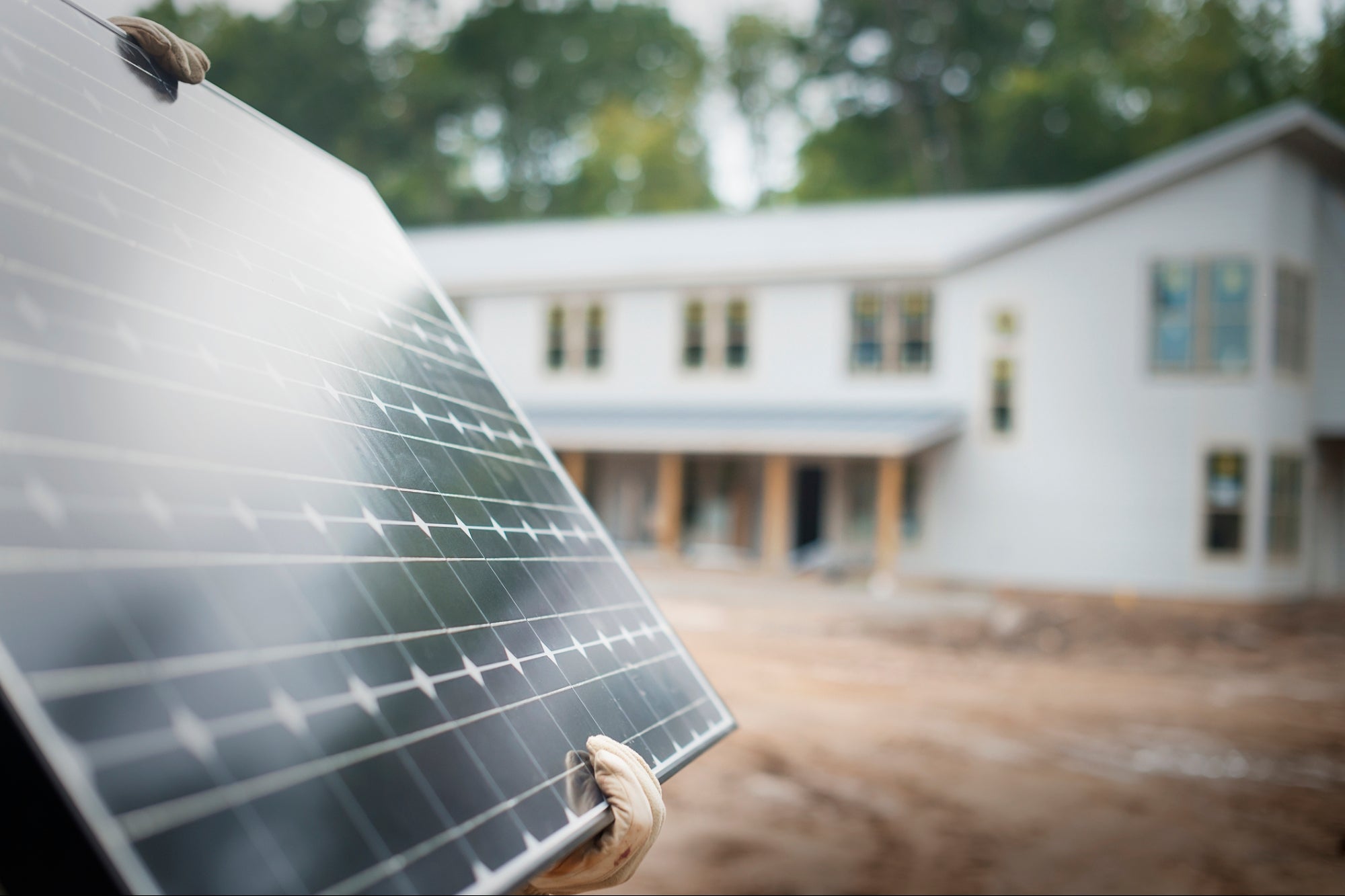Going Solar at Home Switching to solar energy allows you to control and store your own power, and save on utilities.
By Natacha Rousseau Edited by Jessica Thomas
Opinions expressed by Entrepreneur contributors are their own.

The Solar Energy Industries Association (SEIA) and Wood Mackenzie Power & Renewables announced in 2019 that the United States had reached 2 million solar PV installations. SEIA president and CEO Abigail Ross Hopper predicted: "This $17 billion industry is on track to double again in five years, and we believe that the 2020s will be the decade that solar becomes the dominant new form of energy generation."
Why homeowners are choosing solar
The foray that solar panels are making into residential rooftops in the past few years has been unprecedented. Reasons for this include rising home electricity bills, an urge to turn to eco-friendly modes of living, and incentives such as tax rebates by federal and state governments. The federal investment tax credit (ITC) is a popular benefit that gives you a tax credit equal to 26 percent of the total cost of your system. In California, for instance, the state legislature approved the California Solar Initiative, which offers rebates to homeowners in addition to the federal tax credit of up to $2,000 that has been available since 2006.
Net metering is a method where bill credit can be saved by storing the overproduced electricity into a grid. One can also choose to have a completely local off-grid project, with its own energy storage capabilities. Another reason for choosing solar power in residences is the fact that the sun's rays are more easily accessible in some areas than electricity supplied by centrally monitored power grids, especially in far-flung or cutoff rural regions.
Widespread employment opportunities for entry-level workers is another promising trend we are seeing in the United States. According to the California Solar Energy Industries Association, the solar energy industry in California employs more than a half-million workers, a number that exceeds the combined employment of the state's five largest utilities, including the Pacific Gas & Electric, Southern California Edison and San Diego Gas & Electric. The Solar Foundation's National Solar Jobs Census in 2019 estimated roughly 250,000 workers in the industry.
Related: Scientists Warn Oil Will Be Depleted in Less Than 30 Years
Value for the middle class
An interesting trend that has only recently emerged, however, is in the distribution of solar power for residential consumption.
Numerous studies show that middle-class households are leading the solar installation front. Using state-of-the-art machine learning image recognition, a 2017 study by PowerScout and GTM Research unveiled that more than 70 percent of solar households have an annual income between $45,000 and $150,000, a range roughly aligned with "middle income." This finding is extremely important in its implications, as the financial and energetical functioning in a country are intrinsically connected. And finally, policies can be directed to tap into and serve consumers, and ultimately expand regulation to maximize clean energy usage.
If middle-class Americans know one thing, it's the value of the dollar. That's why it's no surprise they see the value in having a home that's solar-powered, giving them more control over their power consumption. Homeowners in specific zip codes around the country are getting huge tax breaks and discounts allowing them in some cases to pay $0 for panels and installation after tax credits. Again, another value middle-class Americans understand.
With solar power, average Americans can directly control the cost of power and energy and most importantly, save money — because you're reducing the cost of traditional utilities. Plus the energy you consume is cleaner and greener.
Trends for the future
By 2024, 2.5 percent of all U.S. homes will have a solar installation, according to Wood Mackenzie's 2020 Q2 forecast. With more and more Americans working from home, the need to reduce utility bills is real. Solar appears to be a viable alternative, with clear forward momentum.
Related: 4 Ways to Make Your Business More Eco-Friendly
During the sunny seasons in states like Florida and California, an immense amount of energy is produced compared to the demand. So the focus is shifting toward making energy storage most efficient. Some companies offer a solar battery to accompany solar panel installation to enable customers to store excess energy instead of sending it back into the electricity grid.
How you can hop in
The most popular options are photovoltaic (or PV) panels on-site. Photons from the sunlight are absorbed by the cells in the panel, which creates an electric field across the layers and causes electricity to flow. Thanks to their small size, rooftop solar panels have lower investment costs than nonresidential large-scale installations.
In 2021, U.S. homeowners are paying an average of $2.81 per watt — a sharp drop in cost from 2008's $8 per watt. Community solar, which involves connecting with other local residents to share a solar power system, is a popular and efficient option for those wanting to further reduce costs.
Technology gets cheaper as more and more people are willing to purchase and deploy it, thanks to an initial heavy investment by governments. And the cheaper it gets, the more people can willingly afford it. Solar energy is already in that cycle or better termed, a hurricane of increasing purchase.
It has become low-hanging fruit for all personal financial considerations as well as eco-wars. Installation and energy through net-metering costs have fallen in North America to a savings-friendly level. Now is a great time to consider your footprint.
Related: Want to Become an Energy-Conscious Home or Business Owner? Here's How.











